by Scott Muniz | Sep 17, 2020 | Azure, Technology, Uncategorized
This article is contributed. See the original author and article here.
In this episode with Rohit Nayak, we cover how to deny public network access settings for Azure SQL Database. Customers can use this setting to block all public access via firewall rules and exclusively rely on private endpoint connections.
Watch on Data Exposed
Resources:
Minimal TLS version
Even more Networking videos
View/share our latest episodes on Channel 9 and YouTube!
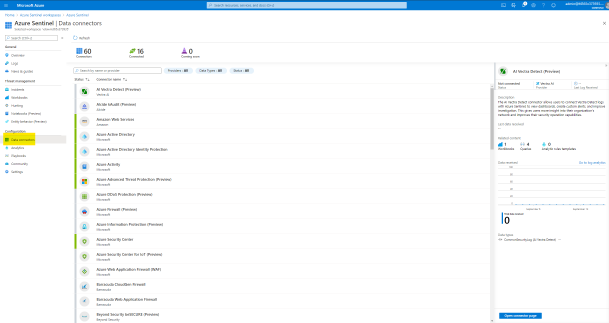
by Scott Muniz | Sep 17, 2020 | Uncategorized
This article is contributed. See the original author and article here.
There are some use cases in the SIEM (Security Information and Event Management) world that require correlation with alerts from an expert system like Office 365 Advanced Threat Protection (ATP). Now you can use the built-in data connector to collect alerts from Office 365 Advanced Threat Protection into Azure Sentinel.
Office 365 Advanced Threat Protection (ATP) safeguards your organization against malicious threats posed by email messages, links (URLs) and collaboration tools. By ingesting Office 365 ATP alerts into Azure Sentinel, you can incorporate information about email and URL based threats into your broader risk analysis and build response scenarios accordingly.
The following types of alerts are supported with the data collector:
- A potentially malicious URL click was detected
- Email messages containing malware removed after delivery
- Email messages containing phish URLs removed after delivery
- Email reported by user as malware or phish
- Suspicious email sending patterns detected
- User restricted from sending email
These alerts can be seen by Office 365 customers in the Office Security and Compliance Center as well.
The Office 365 ATP data connector in Azure Sentinel uses the Automated Investigation and Response API and ingest only alerts which are triggered by automatic investigation in Office 365 ATP.
This blog post covers the required steps to ingest Office 365 ATP alerts into sentinel and how to use the ingested alerts.
How to Enable Office 365 ATP alert ingestion in Azure Sentinel
From the Azure Sentinel navigation menu, select Data connectors.

Select Office 365 Advanced Threat Protection (Preview) data connector, and then select Open Connector Page on the preview pane.
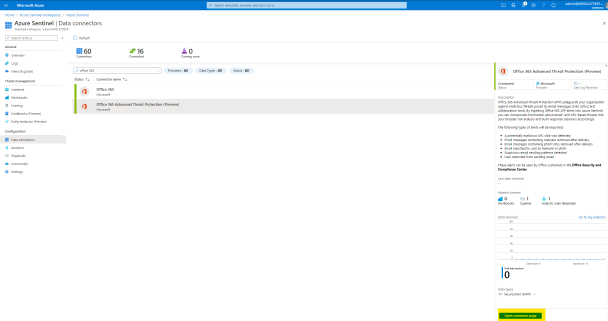
On the Office 365 Advanced Threat Protection (Preview) page, under Configuration select Connect.
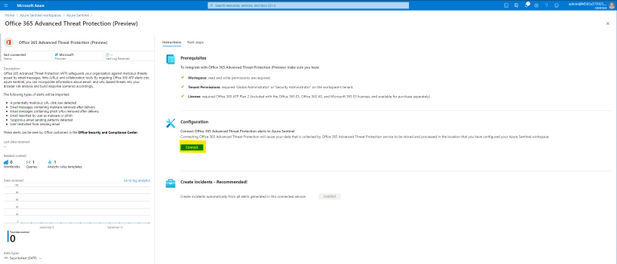
Select Next Steps and Create rule to enable and make adjustments for the relevant analytic rule template.
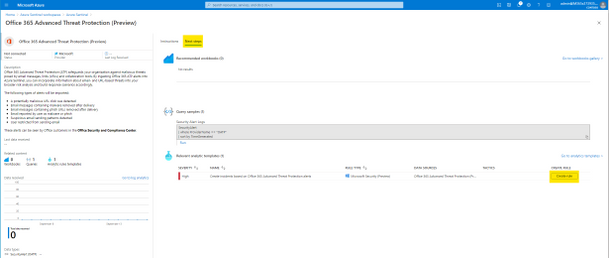
After successfully activation you will see the rule in your Active rules list in the Analytics page. This rule will make sure that all alerts generated by Office 365 ATP will also trigger an Incident in Azure Sentinel.

Now the Office 365 ATP alerts from your Office 365 tenant will be ingested into Azure Sentinel workspace and any generated alert in Office 365 ATP will also trigger an Incident in Azure Sentinel.
GIF Demonstration – How to enable the Office 365 ATP data connector
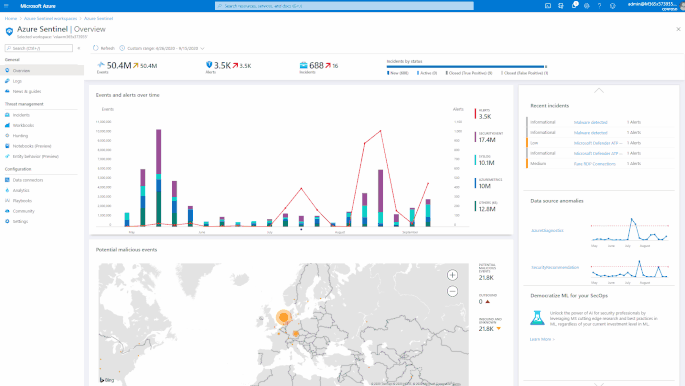
How to Use this Data
Once the data connector is functional you can query the Office 365 ATP alerts. The Office 365 ATP alerts will reside in the SecurityAlert table in Azure Sentinel workspace.
The following example query looks for the generated alerts for Office 365 ATP in Azure Sentinel.
SecurityAlert
| where ProviderName == “OATP”
| sort by TimeGenerated
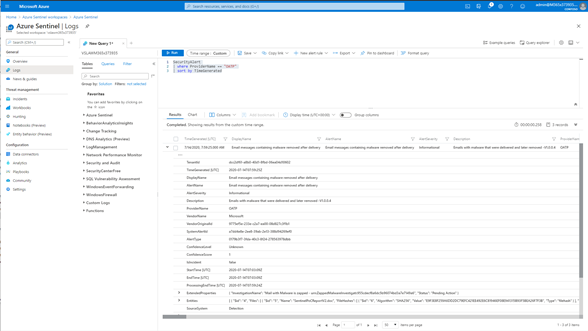
GIF Demonstration – Query Office 365 ATP alerts in Azure Sentinel
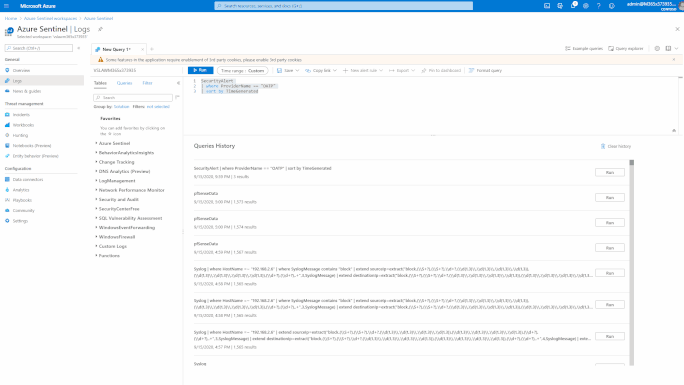
GIF Demonstration – Sample Office 365 ATP Incident in Azure Sentinel
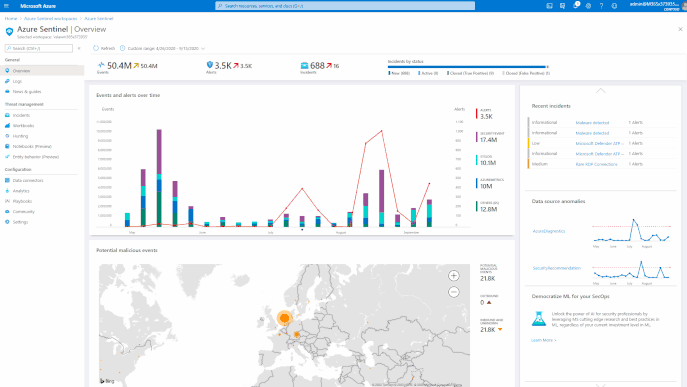
Summary
In this post I have shown how you can onboard Office 365 ATP alerts into Azure Sentinel and sample query how to use the data.
You can also contribute new connectors, workbooks, analytics and more in Azure Sentinel. Get started now by joining the Azure Sentinel Threat Hunters GitHub community and follow the guidance.
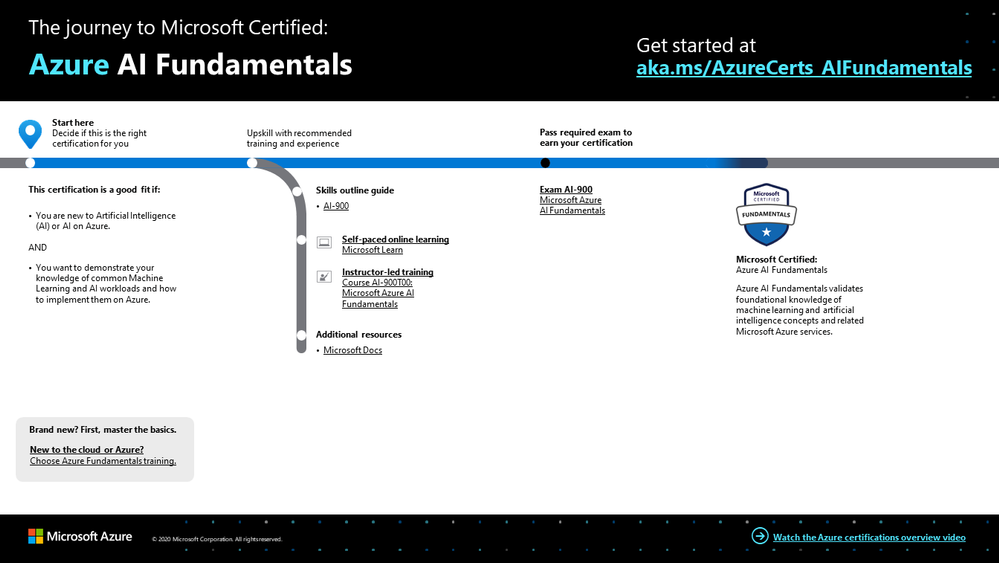
by Scott Muniz | Sep 17, 2020 | Azure, Technology, Uncategorized
This article is contributed. See the original author and article here.
Artificial intelligence (AI) opens doors into possibilities that might have seemed like science fiction only yesterday. Discover ways to improve your apps and take your development skills to the next level. Using AI, you can build solutions and advance technology in many fields, including healthcare, financial management, and environmental protection, to name just a few. Microsoft Azure provides easy-to-use services to help you get started.
Prove that you have the AI skills it takes to build a better world. Earning your certification in Azure AI Fundamentals can supply the foundation you need to build your career and demonstrate your knowledge of common AI and machine learning workloads—and how to implement them on Azure. Mastering the basics can help you jump-start your career and get ready to dive deeper into the other technical opportunities Azure offers.
The Azure AI Fundamentals certification validates your foundational knowledge of machine learning and AI concepts, along with related Azure services. You earn it by passing Exam AI-900: Microsoft Azure AI Fundamentals.
You can use Azure AI Fundamentals to prepare for other Azure role-based certifications, like Azure Data Scientist Associate or Azure AI Engineer Associate, but it’s not a prerequisite for any of them.
What are the prerequisites?
If you’re new to the cloud or just starting out with Azure, first choose Azure Fundamentals training and certification—find out how to Master the basics with Microsoft Certified: Azure Fundamentals.
The Azure AI Fundamentals certification is intended for candidates with both technical and non-technical backgrounds. Data science or software engineering experience are not required; however, some general programming knowledge or experience would be beneficial.
How can you get ready?
To help you plan your journey, check out our The journey to Microsoft Certified: Azure AI Fundamentals infographic. You can also find it in the resources section on the certification and exam pages, which contains other valuable help for Azure professionals.
 Azure AI Fundamentals certification journey
Azure AI Fundamentals certification journey
To map out your journey, follow the sequence in the infographic. First, decide whether this is the right certification for you.
Next, to understand what you’ll be measured on when taking Exam AI-900, review the skills outline guide on the exam page.
Sign up for training that fits your learning style and experience:
After you pass the exam and earn your certification, continue mastering the basics with Azure Data Fundamentals, level up with the Azure AI Engineer Associate certification or the Azure Data Scientist Associate certification, or find the right Microsoft Azure certification for you, based on your profession (or the one you aspire to).
It’s time to master the basics!
Use your Azure AI Fundamentals certification as a starting point to explore deeper training for Azure technologies and to chart your path forward. Whether you’re looking to advance your career or to jump-start a new one, the message is the same: establish your foundations. Earn your certification and open up new possibilities for your career and for turning your AI and machine learning ideas into solutions on Azure.
Related posts
Understanding Microsoft Azure certifications
Finding the right Microsoft Azure certification for you
Master the basics of Microsoft Azure—cloud, data, and AI

by Scott Muniz | Sep 17, 2020 | Uncategorized
This article is contributed. See the original author and article here.
There is something about creating which ignites curiosity in kids.
Regardless of gender, children have an innate appetite for learning what they do not know and perfecting what excites them.
Developer Technologies MVP Sara Chipps found her passion in computing at age 12. Sara recalls that she simply could not believe that her inputs made the computer call another computer – so beginning a lifelong interest in building and coding.
Today, Sara is part of the two-thirds of professional coders who report being under 18 when they start coding. At the same time, however, Sara is part of the less than one in four coders who are women. It is this juxtaposition which drives Sara to inspire young girls just like her towards following their interest in STEM.
Sara’s answer to the gender gap in tech is Jewelbots. Founded in 2014 with Brooke Moreland and Maria Paula Saba, Jewelbots’ original product was a smart friendship bracelet. This soon evolved into science craft kits for budding inventors in geology, chemistry, and electronics.
Now, tens of thousands of girls in more than thirty countries have become coders, chemists, and creators through Jewelbots.
“Our goal is, and always will be, to ignite the curiosity and drive that comes with being a builder,” Sara says. “Consuming technology is ubiquitous in today’s generation. However, true influence lies in being builders and creators of technology. Together, we can eliminate the fear and stigma that can come with being young and science forward.”
Young builders and creators of technology are clearly enjoying the limitless possibilities of Jewelbots. One young girl, for example, took the electronic science kit and sewed its LEDs into a shirt to depict a starry night sky. It is stories like this which continue to drive Sara despite working another full-time job.
“It is always rewarding because the excitement in their eyes truly makes it worth it,” Sara says.
“Every time we get a video or a picture of a girl making something awesome that she is proud of is what gets us going. We couldn’t do what we do without that every day.”
Importantly, direct interaction between the Jewelbots creators and the Jewelbots users informs product development.
“It’s also been a long time since I have been a 10-year-old girl, and imagining the things that drive them is tough,” Sara says. “So, I’ve seen it is best to talk to them and hear about the things that get them excited.”
Jewelbots is but one of Sara’s initiatives to encourage young girls towards STEM. In 2010, Sara co-founded Girl Develop It, a non-profit focused on helping more women become software developers.
Currently, Girl Develop It chapters are building strong, empowered communities in five cities across the US.
Likewise, Jewelbots grows from strength to strength. The creators look forward to expanding their science craft kits into biology and programming, and witnessing the output from the next generation of women scientists.
“We are excited to release more products and see more eyes light up as [girls] learn and make more things that ignite their imagination,” Sara says.
For more on Sara, check out Jewelbots or her Twitter @SaraJChipps


by Scott Muniz | Sep 17, 2020 | Uncategorized
This article is contributed. See the original author and article here.
Over the course of recent months, we have all embraced virtual events as an essential way to communicate and connect. Executive townhalls, employee training, digital conferences and customer engagements are just a few examples of popular scenarios. To simplify and accelerate your usage of Microsoft 365 for these scenarios we are delivering to you the Virtual Event Playbook. This comprehensive guidance provides you with information and tools to deliver seamless events easily and quickly for your audiences.
With Microsoft 365 you can focus on the content you are sharing and the attendee experience you want to create. Using Live Events, Microsoft Teams and other components of Microsoft 365 you can easily create experiences that will be meaningful to your audience and your business. We have organized the content by role and event phase to make it easy to find the information you need. To further support you we are also launching the Virtual Event forum within the Microsoft Technical Community so you can ask your questions, meet other event organizers, producers and IT professionals and participate in events with experts in the area.
This initial playbook covers the most common scenarios that we have seen and the guidance within it has been gathered from product engineering, field consultants, MVP’s, Microsoft Partners and others across our company. It is the comprehensive and official guidance from Microsoft for these services. We are currently working on additional modules for large scale custom events, device integration and industry specialties. We will be rapidly updating this content as new features become available.
More than anything we hope that you can use this guidance to continue connecting with the people that are important to your business, no matter where in the world they may be located. Events are no longer destinations. They are about the information shared and the connections nurtured through the available technology. Please use our resources, join the community, as always give us your feedback!
by Scott Muniz | Sep 17, 2020 | Azure, Technology, Uncategorized
This article is contributed. See the original author and article here.
Initial Update: Thursday, 17 September 2020 13:21 UTC
We are aware of issues within Log Analytics and are actively investigating. Some customers in Australia South East region may experience intermittent data access issues when accessing application data. Customers who have setup Log Search alerts in this region may also experience failures accessing alerts and action rules for the resources.
- Work Around: None
- Next Update: Before 09/17 15:30 UTC
We are working hard to resolve this issue and apologize for any inconvenience.
-Madhav





Recent Comments